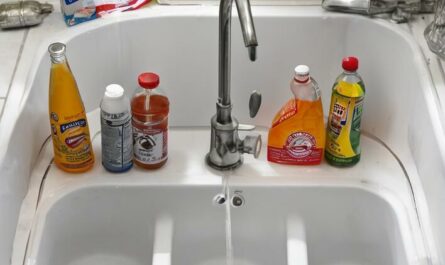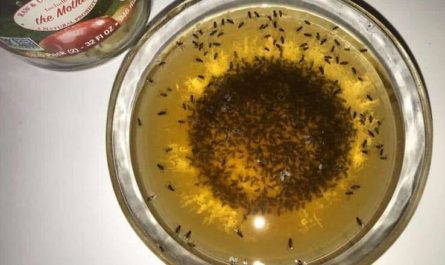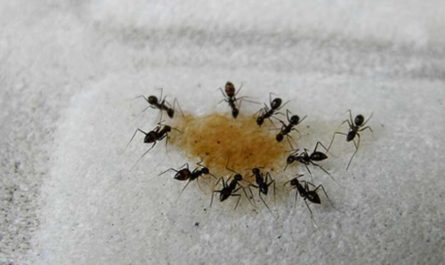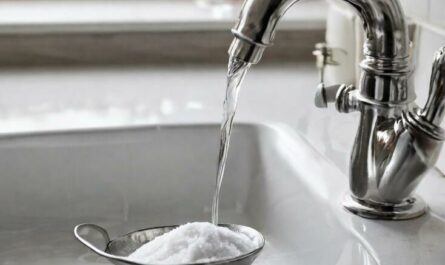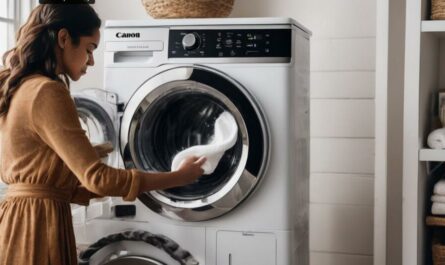Natural cleaning solutions have gained popularity in recent years due to their effectiveness, affordability, and eco-friendliness. Among the numerous options available, baking soda and vinegar stand out as powerful cleaning agents. This article will explore 14 practical and step-by-step ways to use baking soda and vinegar for cleaning. This will help you transform your home into a clean and fresh environment.
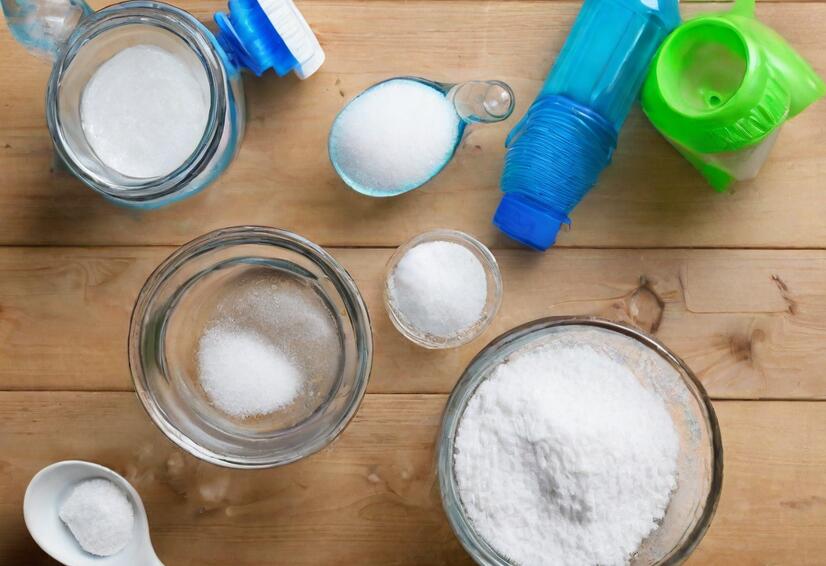
Harnessing the Cleaning Power of Baking Soda and Vinegar
Baking soda, also known as sodium bicarbonate, is a versatile ingredient that acts as a mild abrasive and deodorizer. It effectively cuts through grease, grime, and stains, making it a popular choice for various cleaning tasks.
Vinegar, on the other hand, is a natural acid that has antibacterial properties and is excellent for removing odors. When combined, baking soda and vinegar create a powerful cleaning solution that can tackle even the toughest cleaning challenges.
Why Choose Baking Soda and Vinegar for Cleaning?
Baking soda and vinegar offer several advantages over conventional chemical cleaners. Firstly, they are non-toxic and safe to use around children and pets. Unlike chemical cleaners that may leave harmful residues, baking soda, and vinegar are gentle yet effective.
Additionally, these ingredients are readily available in most households and are much more affordable than commercial cleaning products. Lastly, by using baking soda and vinegar, you contribute to a cleaner and healthier environment by reducing your reliance on harsh chemicals.
Preparing Your Baking Soda and Vinegar Cleaning Solutions
Before diving into the specific cleaning methods, let’s first understand how to prepare and use baking soda and vinegar solutions effectively.
- Gather the Ingredients: For most cleaning tasks, you will need baking soda, white vinegar, water, and a few essential oils (optional) for fragrance.
- Mixing Ratios: The ideal ratio for combining baking soda and vinegar varies depending on the cleaning task. In general, a 1:1 ratio works well for most applications. However, for tougher stains or deep cleaning, you can increase the baking soda to vinegar ratio.
- Safety Precautions: When handling and mixing these ingredients, it’s important to take some safety precautions. Avoid mixing baking soda and vinegar in a sealed container to prevent pressure build-up. Additionally, always wear gloves to protect your skin, and ensure proper ventilation when working with vinegar due to its strong odor.
Now that we have covered the basics, let’s explore the step-by-step cleaning methods using baking soda and vinegar.
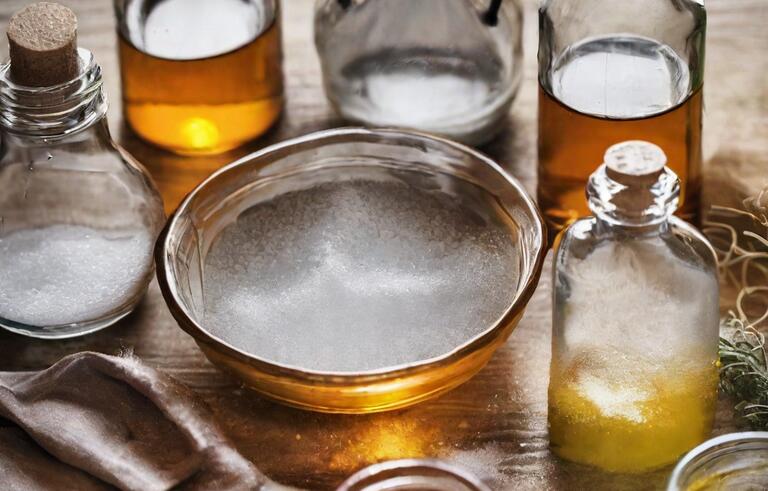
14 Ways to Use Baking Soda and Vinegar for Cleaning
1. Deodorizing the Refrigerator
Over time, refrigerators can develop unpleasant odors. To eliminate these odors and keep your fridge smelling fresh, follow these steps:
- Remove all items from the refrigerator.
- Create a paste by mixing baking soda with a small amount of water.
- Apply the paste to the interior surfaces of the refrigerator, including shelves and drawers.
- Leave the paste for 15-30 minutes to absorb the odors.
- Wipe down the surfaces with a damp cloth or sponge.
- Place an open container of baking soda in the fridge to continue absorbing odors.
2. Unclogging Drains
Clogged drains can be a frustrating issue, but baking soda and vinegar can come to the rescue:
- Pour a pot of boiling water down the drain to loosen any debris.
- Sprinkle about 1/2 cup of baking soda into the drain.
- Follow with 1 cup of vinegar.
- Cover the drain and let the mixture fizz for about 5-10 minutes.
- Flush the drain with another pot of boiling water.
This combination of baking soda and vinegar helps break down grease and organic matter, clearing the clog and leaving your drains flowing smoothly.
3. Cleaning Oven Grease
Cleaning a greasy oven can be a daunting task, but with baking soda and vinegar, it becomes much easier:
- Sprinkle a generous amount of baking soda over the greasy areas of your oven.
- Spray water onto the baking soda until it forms a paste.
- Leave the paste to sit overnight, allowing it to break down the grease.
- The next day, wipe away the baking soda paste using a damp cloth or sponge.
- For stubborn areas, use vinegar on a cloth to further remove grease.
This method is effective for removing grease buildup without the need for harsh chemicals or excessive scrubbing.
4. Shining Stainless Steel Appliances
Stainless steel appliances can quickly accumulate fingerprints and smudges. To restore their shine, follow these steps:
- Sprinkle baking soda onto a damp cloth or sponge.
- Gently scrub the stainless steel surfaces, following the grain.
- Rinse the cloth or sponge and wipe away any residue.
- Dampen a clean cloth with vinegar and wipe down the stainless steel surface.
- Finally, buff the surface with a dry cloth for a streak-free shine.
Using baking soda and vinegar helps remove fingerprints and smudges, leaving your stainless steel appliances looking brand new.
5. Removing Soap Scum
Soap scum can be a stubborn problem in bathrooms. Follow these steps to tackle it effectively:
- Create a paste by mixing baking soda and water.
- Apply the paste to the soap scum using a sponge or cloth.
- Let the paste sit for 15-30 minutes.
- Scrub the area with a brush or sponge.
- Rinse the surface thoroughly with water.
The abrasive nature of baking soda combined with its cleaning properties helps break down soap scum, making it easier to remove.
6. Disinfecting Toilets
For a natural and effective toilet cleaner, try this method using baking soda and vinegar:
- Sprinkle baking soda into the toilet bowl, focusing on the rim and sides.
- Pour vinegar into the bowl, allowing it to mix with the baking soda.
- Let the mixture fizz for a few minutes.
- Scrub the toilet bowl using a toilet brush, paying attention to stains and areas with build-up.
- Flush the toilet to rinse away the cleaning solution.
This combination effectively cleans and deodorizes the toilet bowl, leaving it fresh and sanitized.
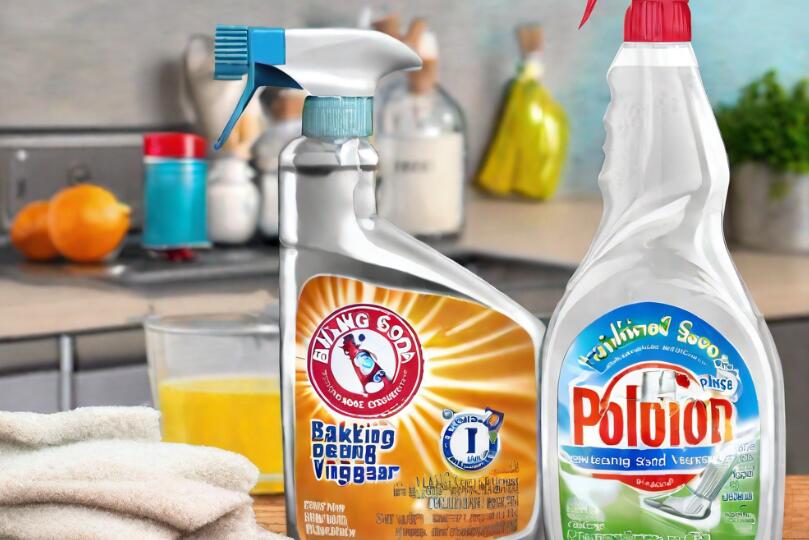
7. Cleaning Grout Lines
Grout lines between tiles can become discolored and dirty over time. Restore their cleanliness with this method:
- Mix baking soda and water to create a paste.
- Apply the paste to the grout lines, ensuring full coverage.
- Scrub the grout lines using a toothbrush or grout brush.
- Rinse the area with water to remove any residue.
Baking soda’s mild abrasive properties help remove dirt and stains from grout lines, leaving them looking clean and refreshed.
8. Carpet Stain Removal
Carpet stains can be unsightly, but baking soda and vinegar can help remove them effectively:
- Blot any excess liquid or debris from the stain.
- Sprinkle baking soda over the stained area.
- Mix equal parts vinegar and water in a spray bottle.
- Spray the mixture onto the baking soda, creating a fizzing reaction.
- Gently scrub the stain with a brush or cloth.
- Blot the area with a clean, dry cloth to absorb any moisture.
This method helps lift and remove stains from carpets, restoring their appearance.
9. Freshening Upholstery
To freshen up your upholstery and remove odors, follow these steps:
- Sprinkle baking soda liberally over the upholstery.
- Allow the baking soda to sit for at least 15-30 minutes.
- Use a vacuum cleaner with an upholstery attachment to remove the baking soda.
Baking soda’s natural deodorizing properties help eliminate odors, leaving your upholstery smelling fresh.
10. Enhancing Detergent Power
To boost the cleaning power of your laundry detergent, add baking soda:
- Add 1/2 cup of baking soda to your regular laundry detergent.
- Wash your clothes as usual.
Baking soda helps neutralize odors and enhances the cleaning effectiveness of your detergent, resulting in fresher and cleaner laundry.
11. Natural Fabric Softener
Vinegar can be used as a natural fabric softener, replacing conventional chemical-based alternatives:
- Add 1/2 cup of vinegar to the fabric softener compartment of your washing machine.
- Wash your clothes as usual.
Vinegar helps soften fabrics and reduces static cling without leaving a vinegar smell on your clothes.
12. Clearing Garbage Disposal Odors
To eliminate unpleasant odors from your garbage disposal, try this simple method:
- Pour 1/2 cup of baking soda down the drain.
- Add 1 cup of vinegar.
- Let the mixture fizz for a few minutes.
- Rinse the drain with hot water.
This combination effectively neutralizes odors, leaving your garbage disposal smelling fresh.
13. Washing Fresh Produce
To remove dirt, pesticides, and bacteria from fresh produce, follow these steps:
- Fill a sink or large bowl with water.
- Add 1/4 cup of vinegar.
- Let the produce soak in the vinegar water for 10-15 minutes.
- Rinse the produce thoroughly with water before consuming.
Vinegar’s antibacterial properties help ensure your fresh produce is clean and safe for consumption.
14. Polishing Silverware
To restore the shine to your dull silverware, try this method using baking soda and vinegar:
- Create a paste by mixing baking soda and water.
- Apply the paste to the silverware using a cloth or sponge.
- Gently rub the silverware to remove the tarnish and restore shine.
- Rinse the silverware with water and dry thoroughly.
Baking soda and vinegar help remove the tarnish and bring back the luster of your silverware.
Maximizing the Effectiveness of Baking Soda and Vinegar
To get the most out of your baking soda and vinegar cleaning solutions, consider the following tips:
- Contact Time: Allow the baking soda and vinegar mixtures to sit on surfaces for sufficient time to maximize their cleaning potential.
- Chemical Reaction: The reaction between baking soda and vinegar produces carbon dioxide, which can help to lift dirt and grime. Take advantage of this reaction by allowing the mixture to fizz before scrubbing or rinsing.
- Customization: Adjust the ratios of baking soda and vinegar to suit the severity of the cleaning task. For tougher stains or build-up, increase the amount of baking soda to vinegar for added strength.
Common Questions
1. Are baking soda and vinegar safe to use on all surfaces?
Yes, baking soda and vinegar are generally safe to use on a variety of surfaces, including countertops, tile, glass, and stainless steel. However, it’s always recommended to test a small, inconspicuous area first, especially on delicate or porous surfaces like marble.
2. Can I mix baking soda and vinegar together in one bottle for cleaning?
Mixing baking soda and vinegar in a sealed container can cause pressure to build up and potentially result in an explosion. It’s best to mix them directly on the surface you’re cleaning to harness their cleaning power safely.
3. Will the vinegar smell linger after cleaning?
While vinegar has a strong smell initially, it dissipates quickly once it dries. You can also mask any residual vinegar smell by adding a few drops of essential oils to your cleaning solutions.
Conclusion
Baking soda and vinegar are powerful allies when it comes to natural and effective cleaning. By following the step-by-step methods outlined in this guide, you can harness their cleaning power to tackle a wide range of household cleaning tasks.


